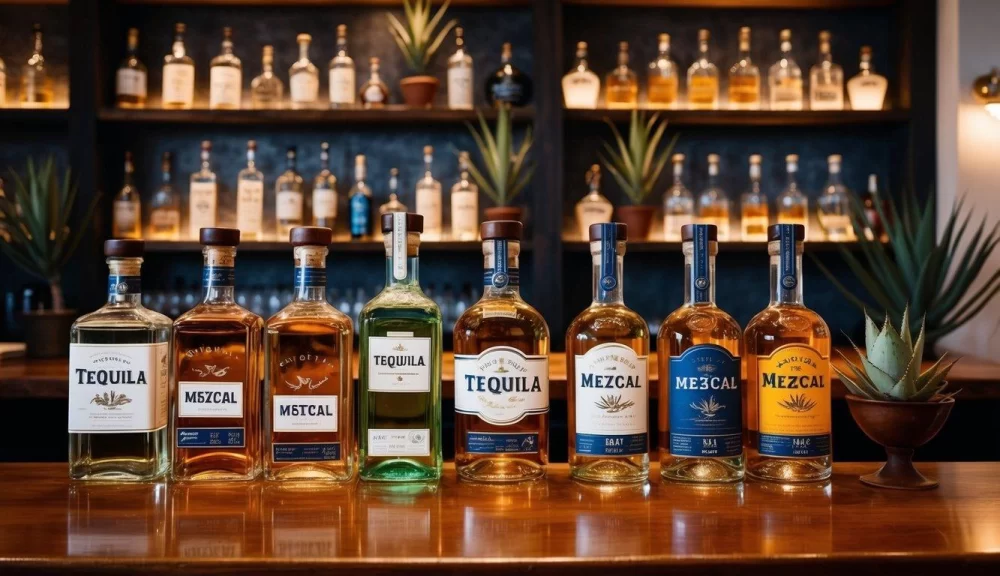
Discovering the Rich Diversity of Tequila Selections
Tequila is one of the most iconic spirits in the world, renowned for its distinctive flavors and rich history. Over the years, I’ve developed a deep appreciation for the various types of tequila available, each offering unique nuances that make them perfect for different occasions and tastes. Whether you’re new to tequila or a seasoned enthusiast, understanding the different tequila selections and their characteristics can dramatically enhance your tasting experience. In this article, I’ll take you on a journey through the diverse world of tequila, exploring everything from the refreshing notes of Blanco to the smooth complexity of Añejo.
The Origins of Tequila: A Brief Overview
Before diving into the varieties, it’s important to understand where tequila comes from. Tequila is made from the blue agave plant, primarily grown in the region around the town of Tequila, in the Jalisco state of Mexico. The production of tequila has a long and storied history, dating back to the Aztecs, who were the first to ferment the agave plant into a rudimentary alcoholic beverage. However, it was the Spanish who refined the distillation process, eventually leading to the creation of the tequila we know today.
What makes tequila unique is its primary ingredient—the blue agave. This plant gives tequila its characteristic sweetness and earthy flavors, which can vary depending on how long the tequila is aged. From the raw, vibrant flavors of Blanco to the rich, mellow tones of Añejo, each variety of tequila offers something distinct.
The Different Types of Tequila
Tequila comes in a few different varieties, each with its own aging process and flavor profile. Understanding the differences between these types is key to finding the perfect bottle for your taste. Let’s explore the four main categories of tequila:
1. Blanco Tequila (Silver Tequila)
Blanco tequila, also known as silver tequila, is the purest form of tequila. It is typically bottled right after distillation or aged for a short period, usually under two months. The result is a clear, vibrant spirit with a clean, crisp flavor that showcases the agave’s natural sweetness and vegetal notes. For me, Blanco tequila is perfect when I want to experience the essence of tequila in its rawest form.
Blanco tequila works wonderfully in cocktails, especially in classics like the Margarita or Tequila Sunrise. Its bold flavor and smooth finish also make it an excellent choice for sipping on its own, especially when served chilled or over ice. I remember one evening when I tried a premium Blanco for the first time—its fresh, herbaceous notes were unlike anything I had ever tasted, and it quickly became one of my go-to choices for mixing.
2. Reposado Tequila
Reposado tequila, which means "rested" in Spanish, is aged in oak barrels for a period of two months to one year. The aging process gives reposado tequila a golden hue and a more rounded, complex flavor profile compared to Blanco. The interaction between the tequila and the oak barrels imparts subtle flavors of vanilla, caramel, and wood, giving reposado a smoother, richer taste.
Reposado is often described as a middle ground between the fresh vibrancy of Blanco and the deeper complexity of Añejo. This makes it a versatile choice for both sipping and mixing. I personally love it in a Tequila Old Fashioned, where the oaky sweetness complements the bitters perfectly. Reposado is also fantastic served neat or on the rocks, allowing the subtle flavors to open up as you sip.
3. Añejo Tequila
Añejo tequila is aged for a minimum of one year but usually spends anywhere from one to three years maturing in oak barrels. This extended aging process transforms the tequila into a rich, complex spirit with a deep amber color. The longer aging time allows the tequila to absorb more flavors from the wood, creating a smoother, more refined taste with notes of chocolate, dried fruit, and spices.
For me, Añejo tequila is the perfect sipping spirit. Its richness and complexity make it ideal for slow enjoyment, and it pairs beautifully with dark chocolate or a charcuterie platter. On one occasion, I spent an evening savoring an Añejo tequila with friends, and the flavors evolved with each sip, revealing layers of depth that made it an unforgettable experience. Añejo tequila is often served in a snifter glass, similar to a fine whiskey, to enhance the aromatic experience.
4. Extra Añejo Tequila
Extra Añejo tequila is the highest level of aged tequila, matured for a minimum of three years. This ultra-aged tequila is incredibly smooth and luxurious, with flavors that rival some of the finest aged spirits in the world. Extra Añejo tequila is rich, complex, and velvety, offering deep flavors of oak, toffee, and spices, often with a slightly sweet finish.
Extra Añejo is perfect for special occasions or as a treat when you’re in the mood for something truly exceptional. I’ve had the pleasure of sampling a few bottles of Extra Añejo, and the experience is unlike any other. The smoothness and depth of flavor make it an excellent sipping tequila, and it’s often compared to aged cognac or scotch. If you’re ever in the market for a luxury tequila experience, Extra Añejo is a choice you won’t regret.
Understanding Tequila Labeling and Certifications
As I began to explore the world of tequila, one thing that stood out to me was the importance of certifications and labels. Tequila is a protected designation of origin (PDO) product, meaning that only spirits produced in specific regions of Mexico—primarily in Jalisco—can be legally called tequila. If you see the phrase “Tequila 100% Agave” on a bottle, it means that the tequila is made entirely from blue agave, rather than being blended with other sugars. This is a crucial indicator of quality.
Additionally, many premium tequilas will display a NOM (Norma Oficial Mexicana) number, which is assigned to the distillery by the Mexican government. This number helps identify the specific distillery that produced the tequila, giving you more insight into where and how the tequila was made. As a consumer, these labels can be helpful in ensuring you’re getting a high-quality product that adheres to strict production standards.
Pairing Tequila with Food: A Match Made in Heaven
As I’ve learned over time, tequila is incredibly versatile and can pair well with a wide range of foods. Whether you’re enjoying a simple meal or hosting a more elaborate dinner party, tequila can elevate your food pairings in unexpected ways. Here are a few of my favorite tequila and food combinations:
1. Blanco with Fresh Seafood
The crisp, refreshing nature of Blanco tequila pairs wonderfully with fresh seafood, especially ceviche or shrimp tacos. The bright flavors of the tequila complement the delicate flavors of the seafood, creating a refreshing and balanced taste.
2. Reposado with Grilled Meats
Reposado tequila’s oaky richness makes it an excellent match for grilled meats, such as steak or barbecued chicken. The smoky, savory flavors of the meat pair perfectly with the vanilla and caramel notes in the tequila, enhancing both the food and the drink.
3. Añejo with Dark Chocolate
The deep, complex flavors of Añejo tequila make it an excellent companion for dark chocolate. The smoothness and rich sweetness of the tequila complement the bitter notes of the chocolate, creating a decadent dessert pairing.
Exploring the diverse world of tequila has been an exciting journey for me, and I encourage you to dive in and experience it for yourself. From the fresh vibrancy of Blanco to the luxurious depth of Extra Añejo, there’s a tequila for every occasion and every palate. If you’re looking for the perfect bottle or guidance on selecting the best tequila, I highly recommend checking out Liquor Wash, where you can find a wide selection of premium tequilas that will take your tasting experience to the next level.








